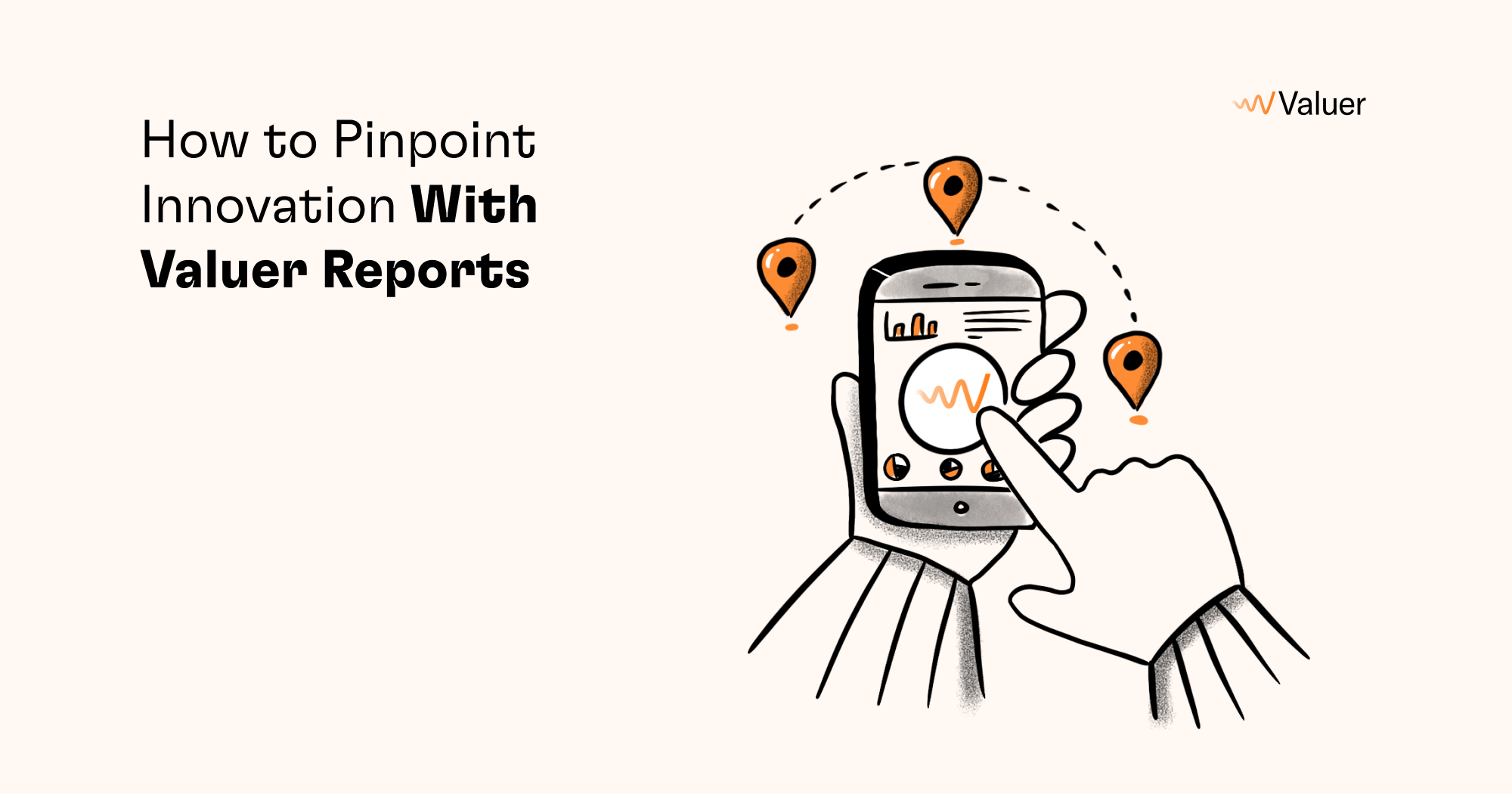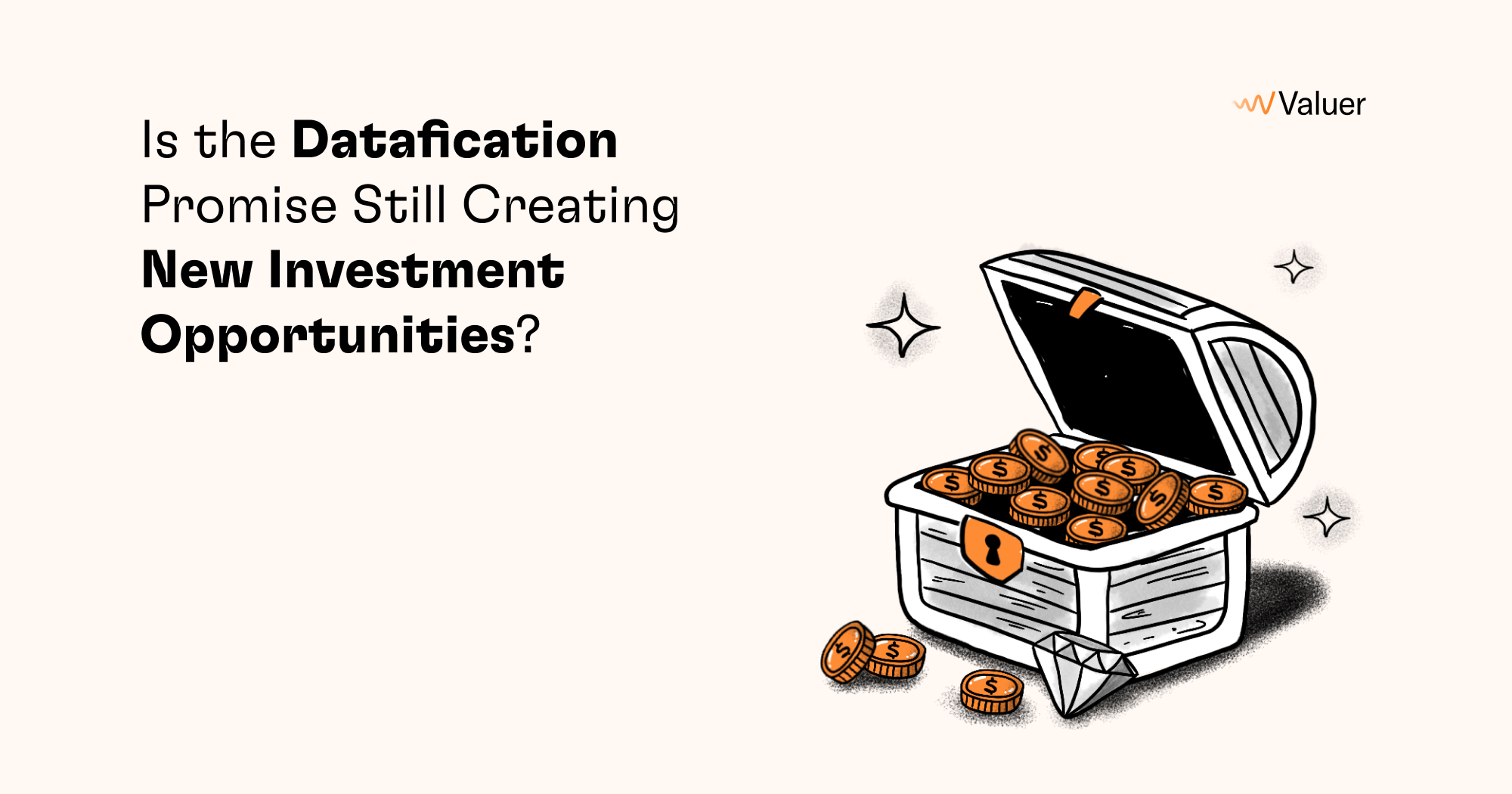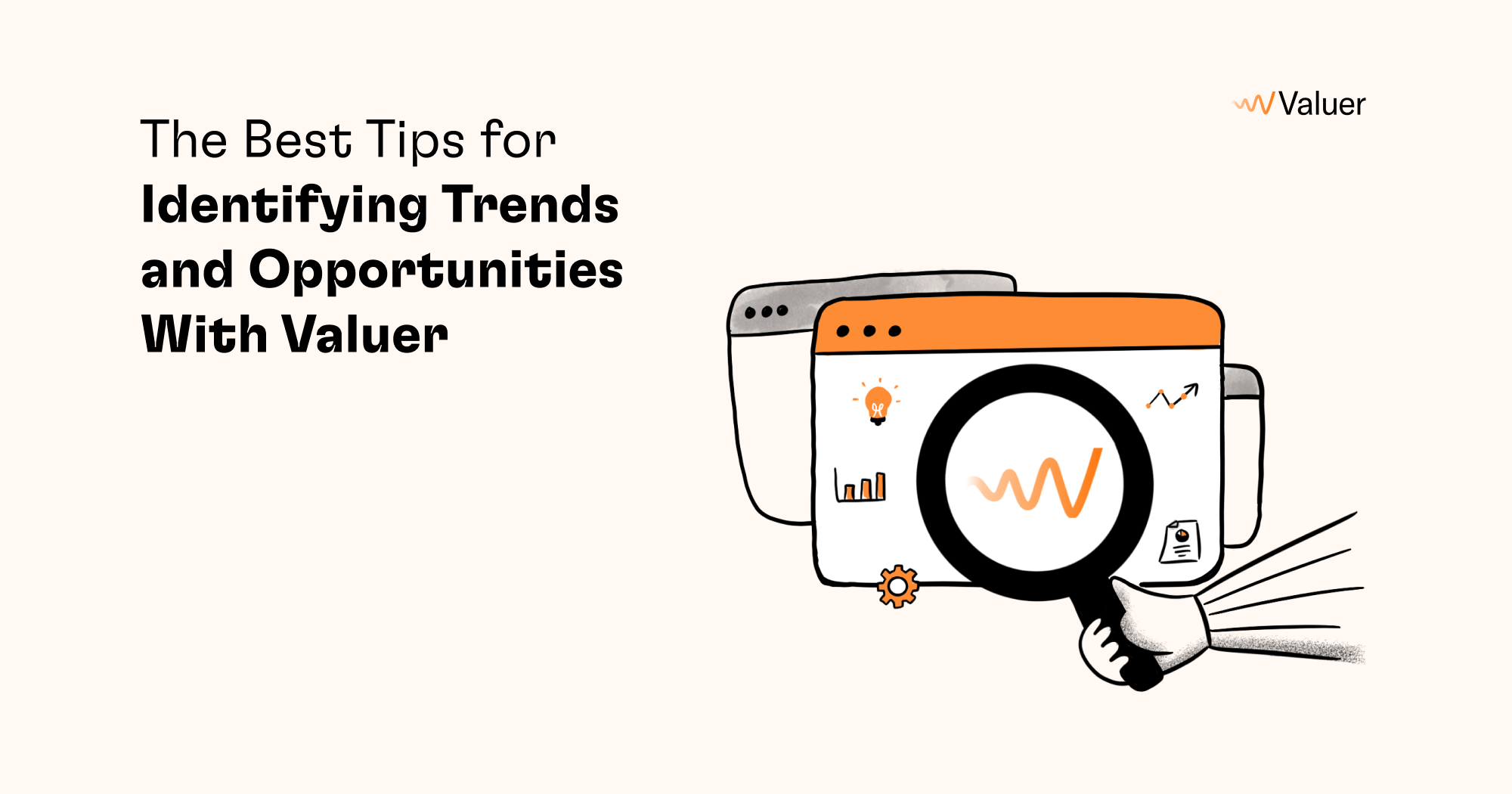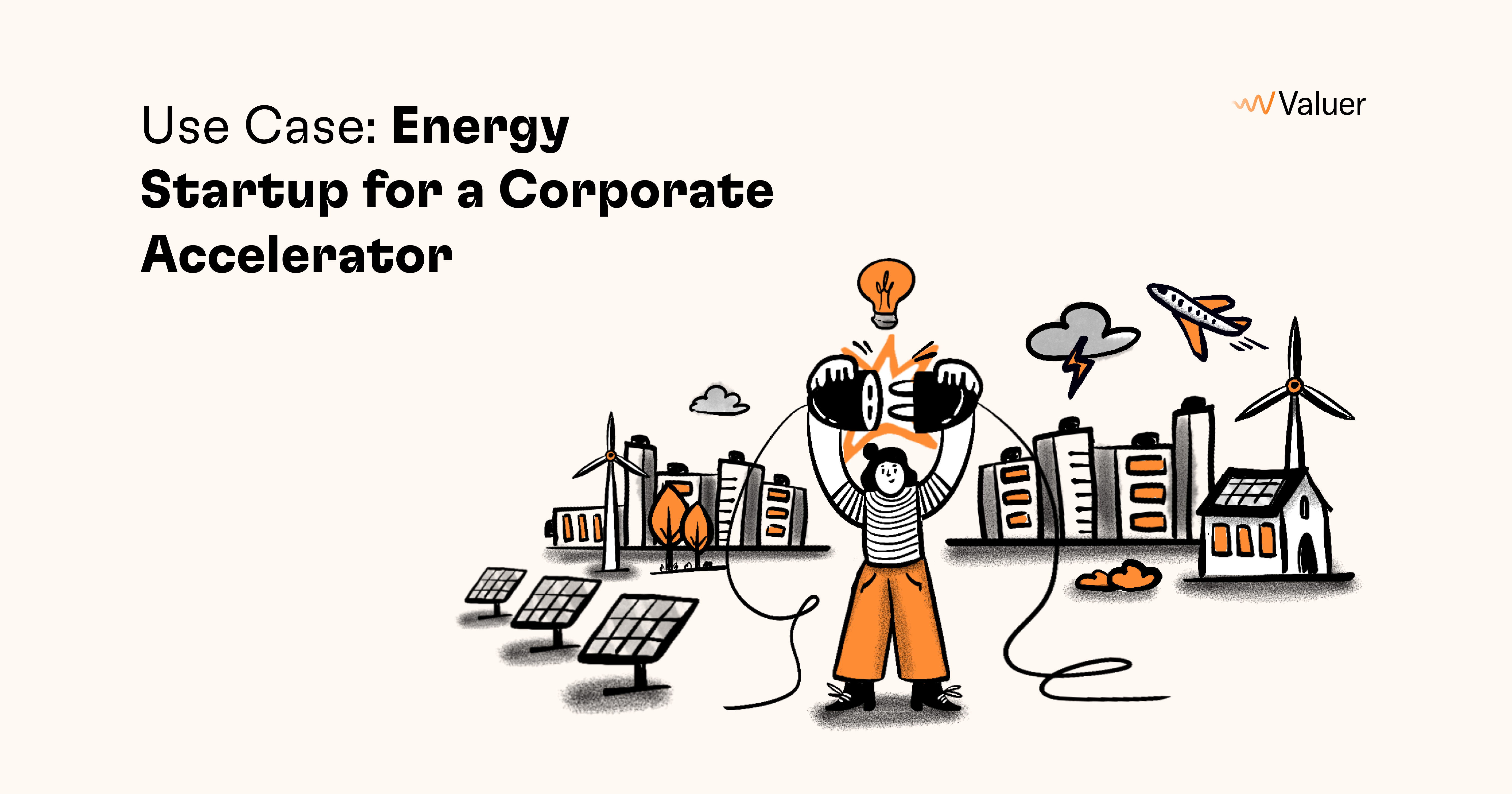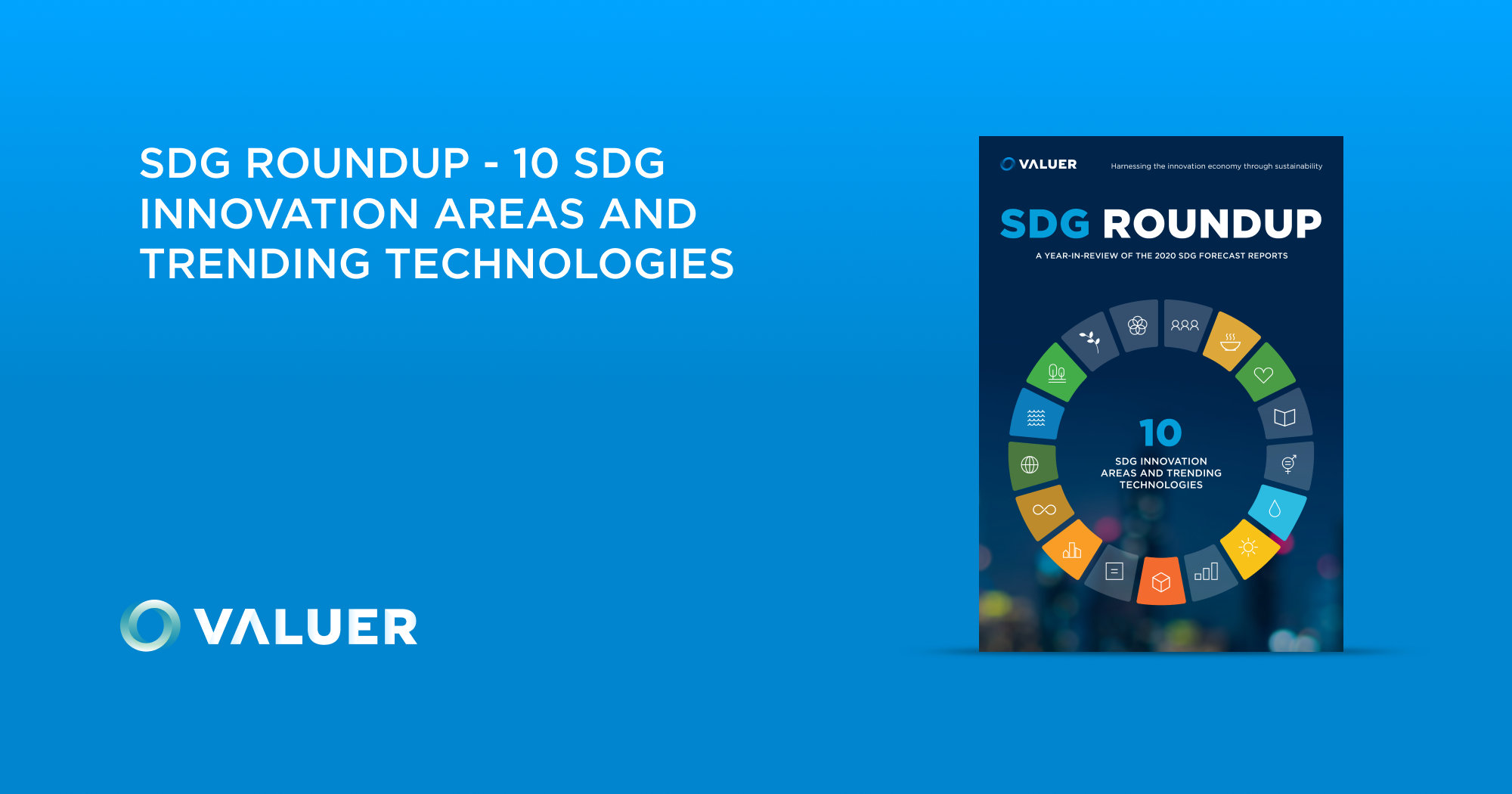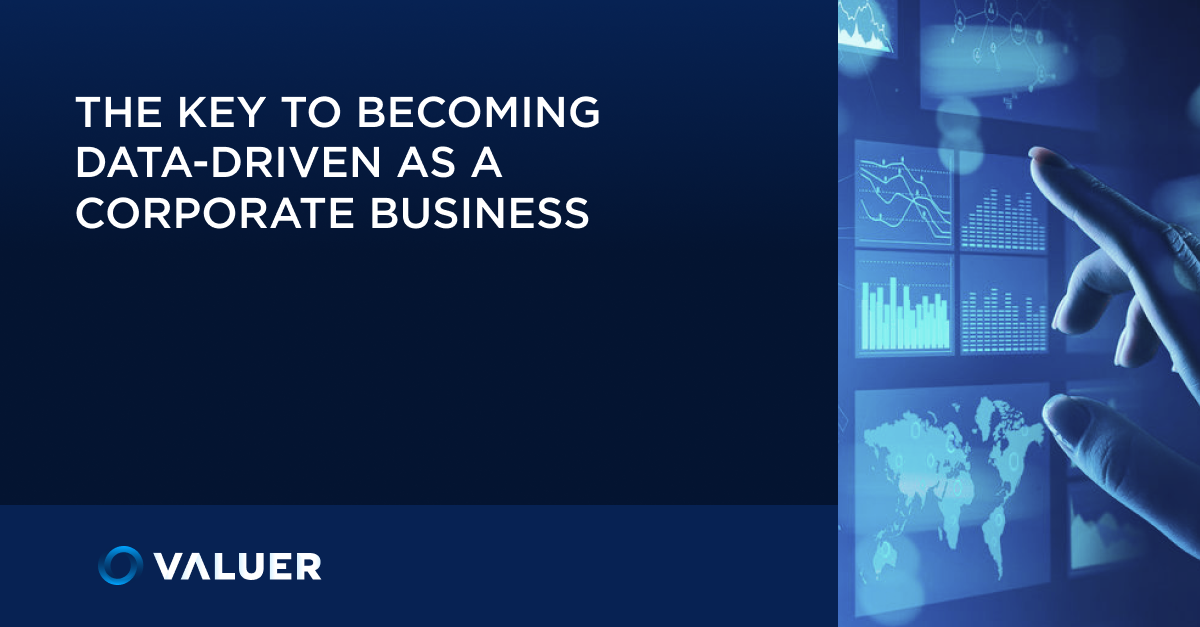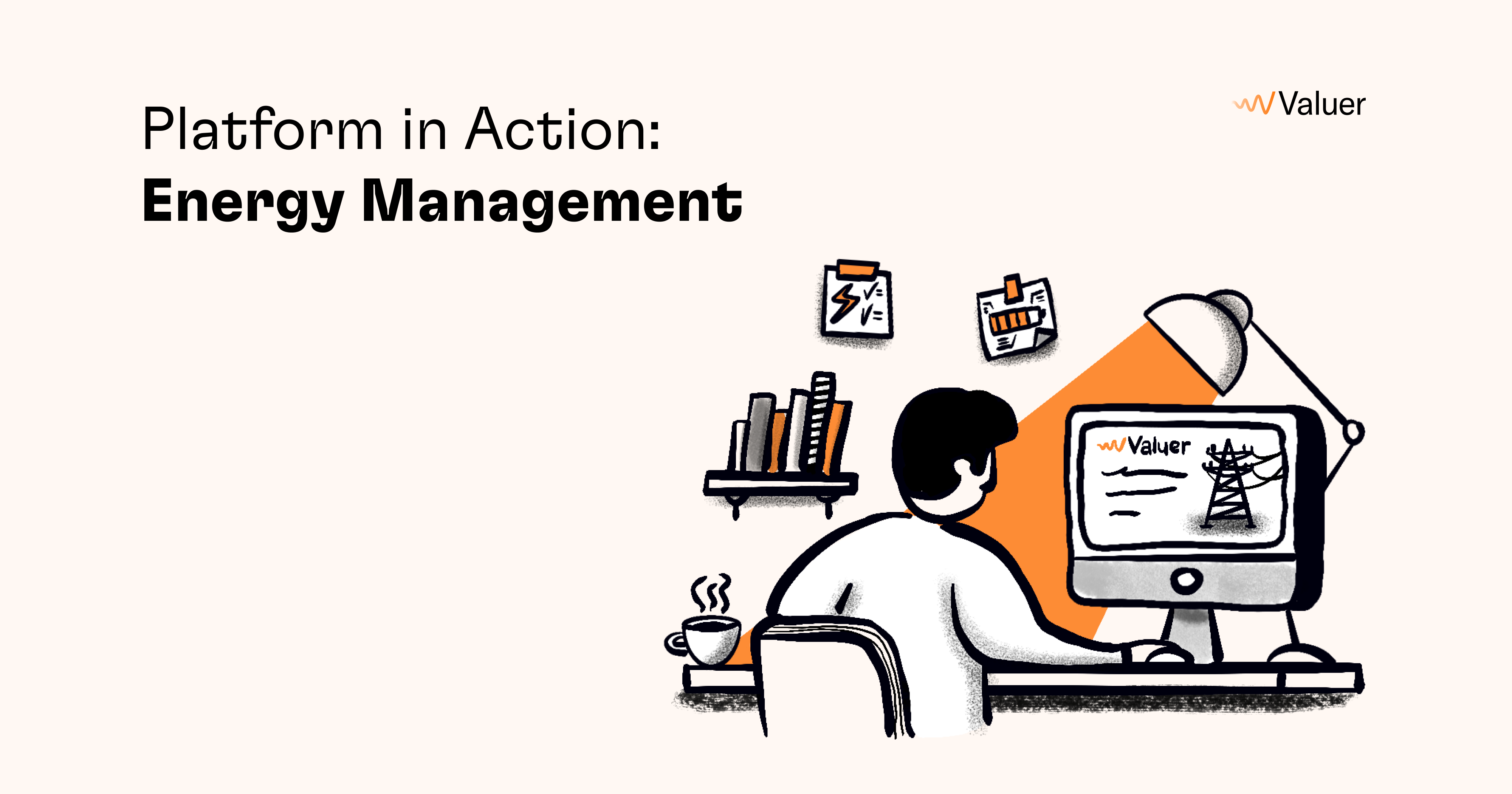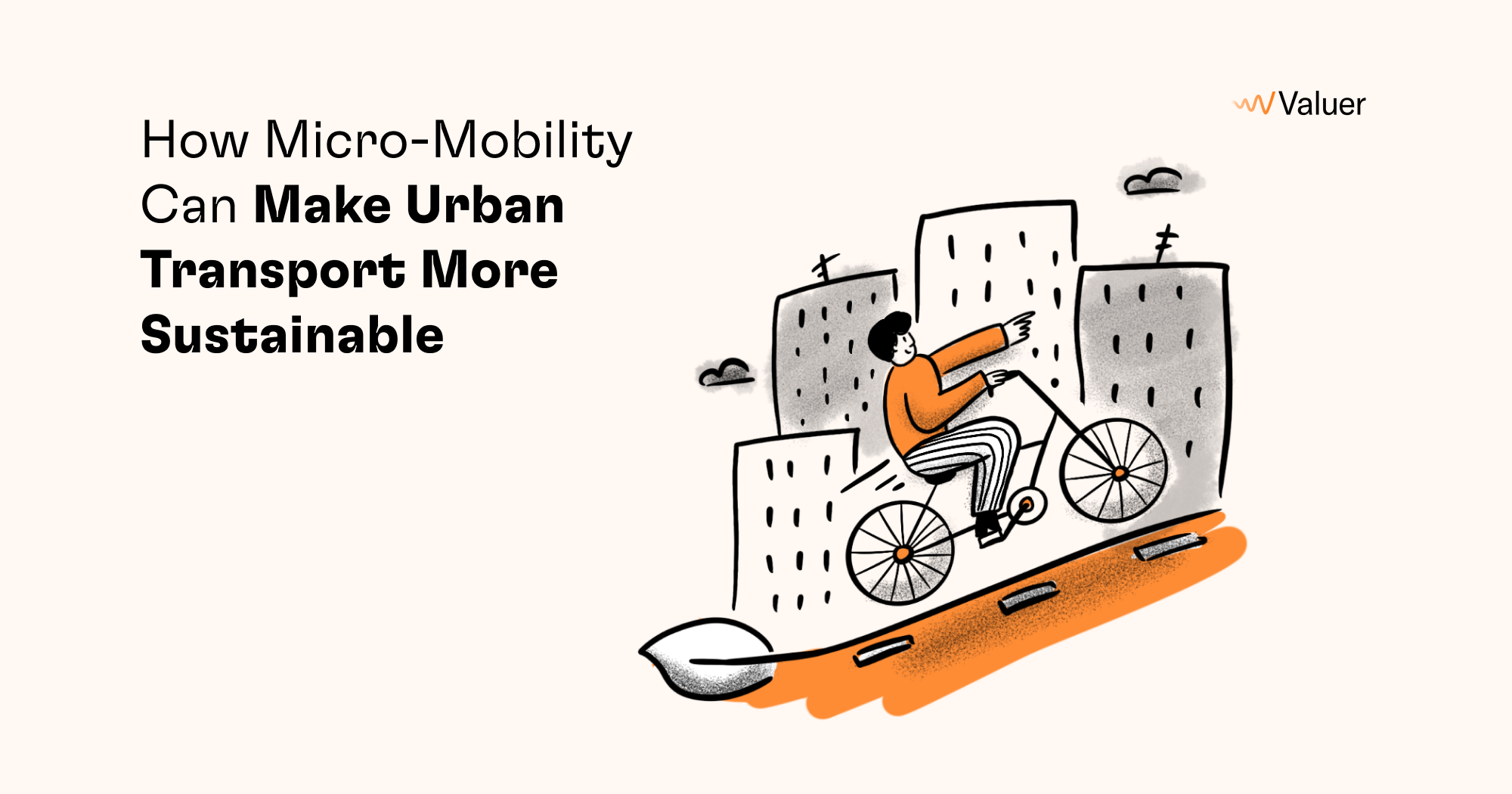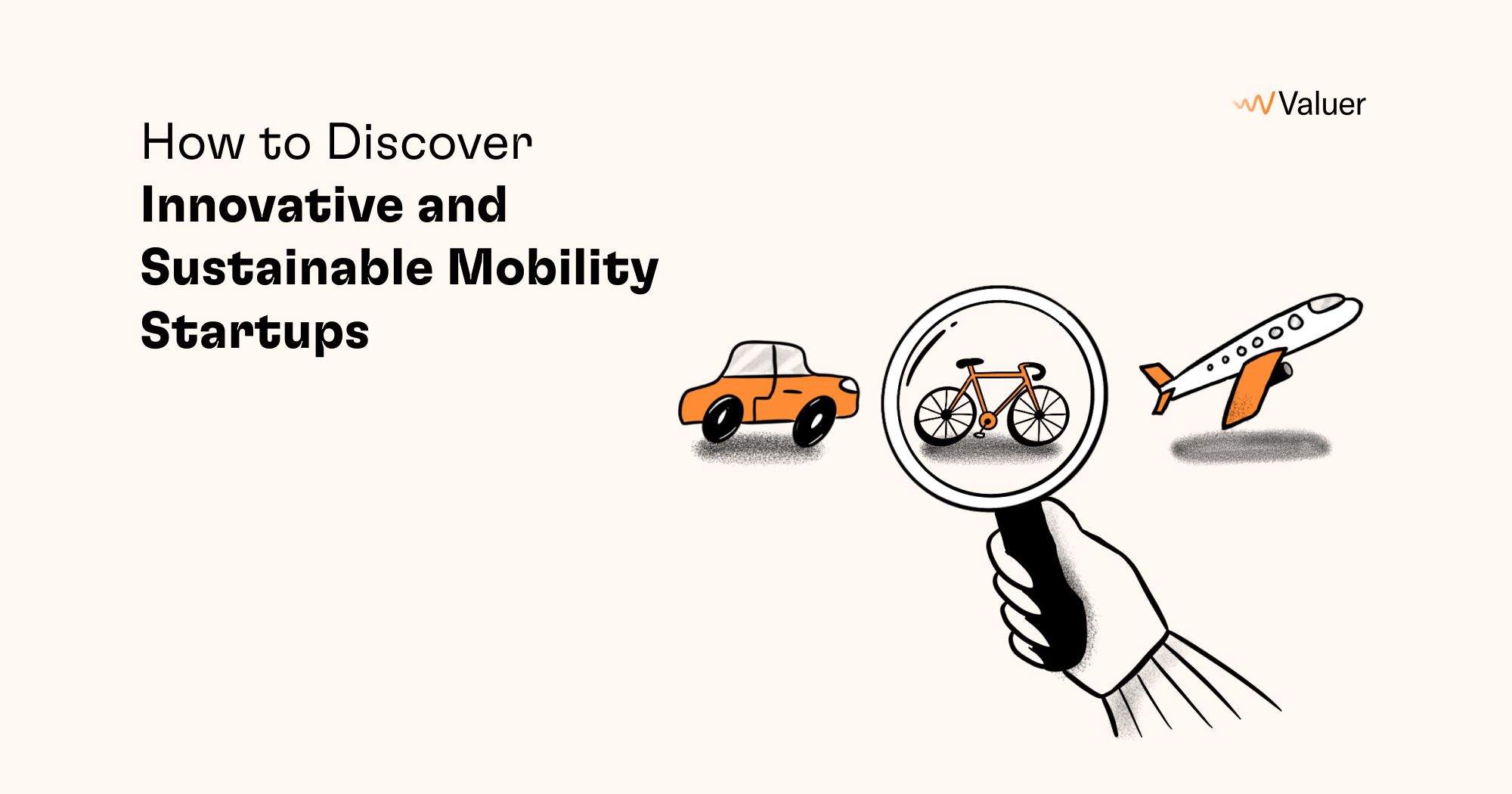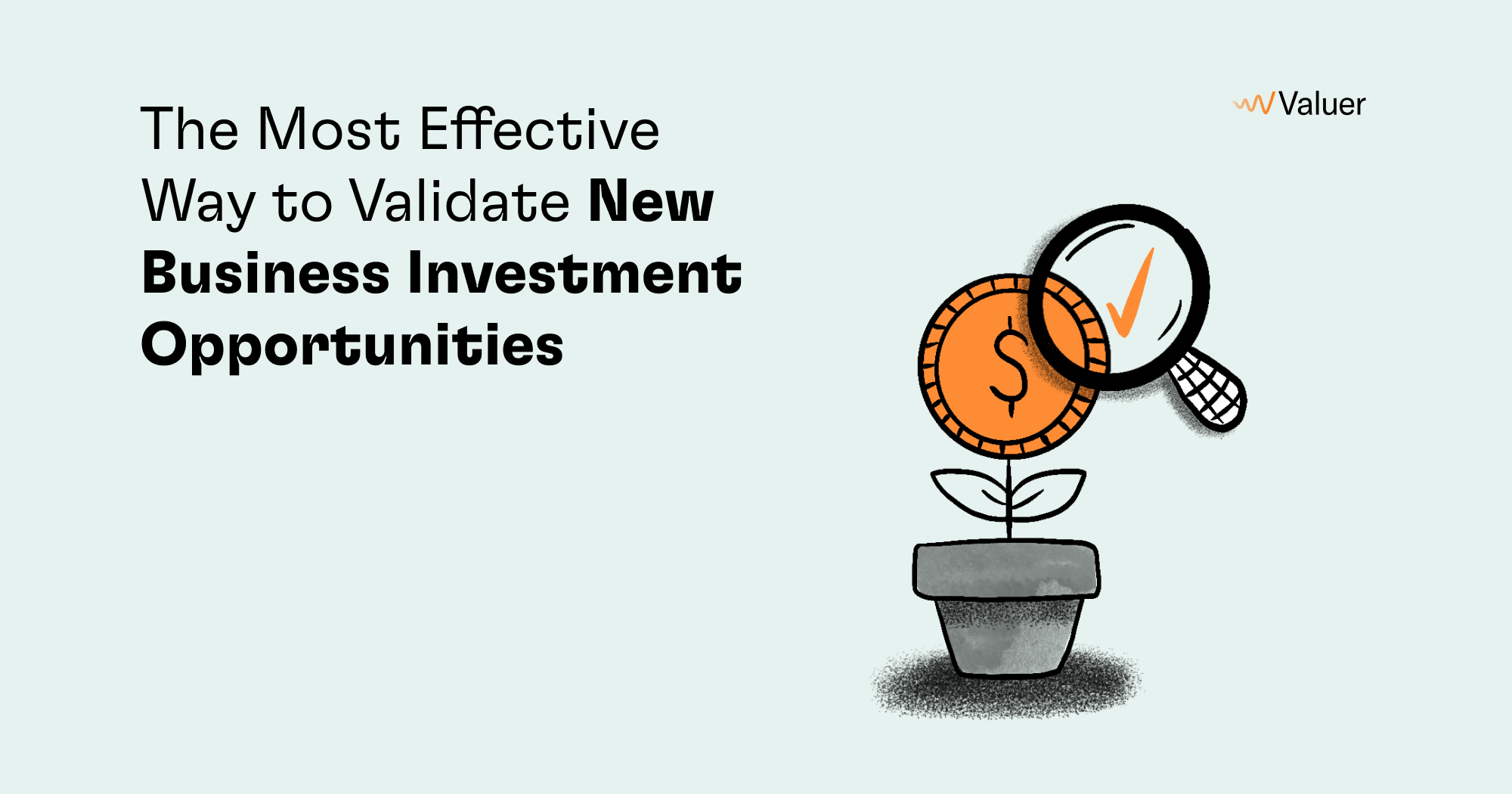*Updated September 2022
Green is the new black, and despite the clichéd metaphor the point is that sustainability is “in”. But sustainability is more than just a buzzword or trend, we see it as a serious potential for companies and investors. Just consider the sheer number of new technologies, solutions, and innovations coming from the umbrella of sustainability. The renewable energy market alone is expected to reach $2.15 trillion by 2025.
Over the last couple of years, we’ve become intrigued by innovation in sustainability and decided to generate a series of reports that dove into the SDG goals set by the UN and how companies are innovating along those lines. Those series of reports eventually evolved into our Innovating Sustainability reports that go into a particular industry to discover the technology trends and companies who are developing these technologies and solutions.
[Related article - What the Future Looks Like for Food Production]
But let’s digress back to the SDG reports and in particular the SDG 15, which is the UN sustainable goal “life on land”. SDG 15 is meant to protect ecosystems by preventing deforestation, desertification, and the degradation of biodiversity while promoting sustainable solutions and regenerative practices.
When drawing our insights into life on land, we found three cluster areas where there was substantial attention and investment in and those are: sustainable agriculture, sustainable forestry, and sustainable water management. Full disclosure, when we started this SDG 15 report we had not yet launched the platform, or rather the platform that you see today. The 3,000 plus startups that these insights are based on were drawn directly from our database’s back end and ran directly through our AI algorithm.
However, what we want to do is show you how you can do a similar search to find startups, technologies, and industry trends on the current platform while using the SDG 15 life on land goal as an example. Hopefully, this can help you in your search inquiries, show you new ways to utilize the platform, and see innovation in action for yourself.
Square one: the search
Let’s start at square one, the foundation of our search engine, and that’s the database. Our database is made up of millions of data points on companies gathered by our team using data scraping. To ensure the right information gets in there, filters are used to sieve out only the relevant information for the database. Then, these data points are compiled and used to make company profiles and the basis for searches and platform features.
From there, we move on to our platform and what you’ll be using, the search engine. Here, the AI takes over and becomes the driving force when it comes to your search and results. This is the part where you can interact and get hands-on with our AI.
You can type however detailed an inquiry you want into the search engine as the AI assistant will understand any inquiry with reliability. We ensure this by using natural language processing (NLP). Our NLP is based on a refined version of BERT, which takes the keywords and semantics of your inquiry and translates that into results.
This allows the user access to relevant information without having to be specific in their rhetoric or in their search inquiry. This allows for flexibility in your inquiry and helps ensure your results are relevant to your search.
Now after you have typed in your inquiry you will have the option to refine your search even further. Here is where we will present you a list of industries and sub-industries to select from, which is merely to help better hone in your search and is completely optional.
You can think of our AI in terms of pottery; it may seem strange but bear with me. Think of the potter's wheel and the clay as the AI and data. Now without your interaction shaping the clay where would you be?
But if you get your hands a bit dirty, you can help create the outcome you envisioned, and possibly one you weren't expecting. With the platform, you get to help mold your outcome by shaping the AI with your input and we think that's something really interesting.
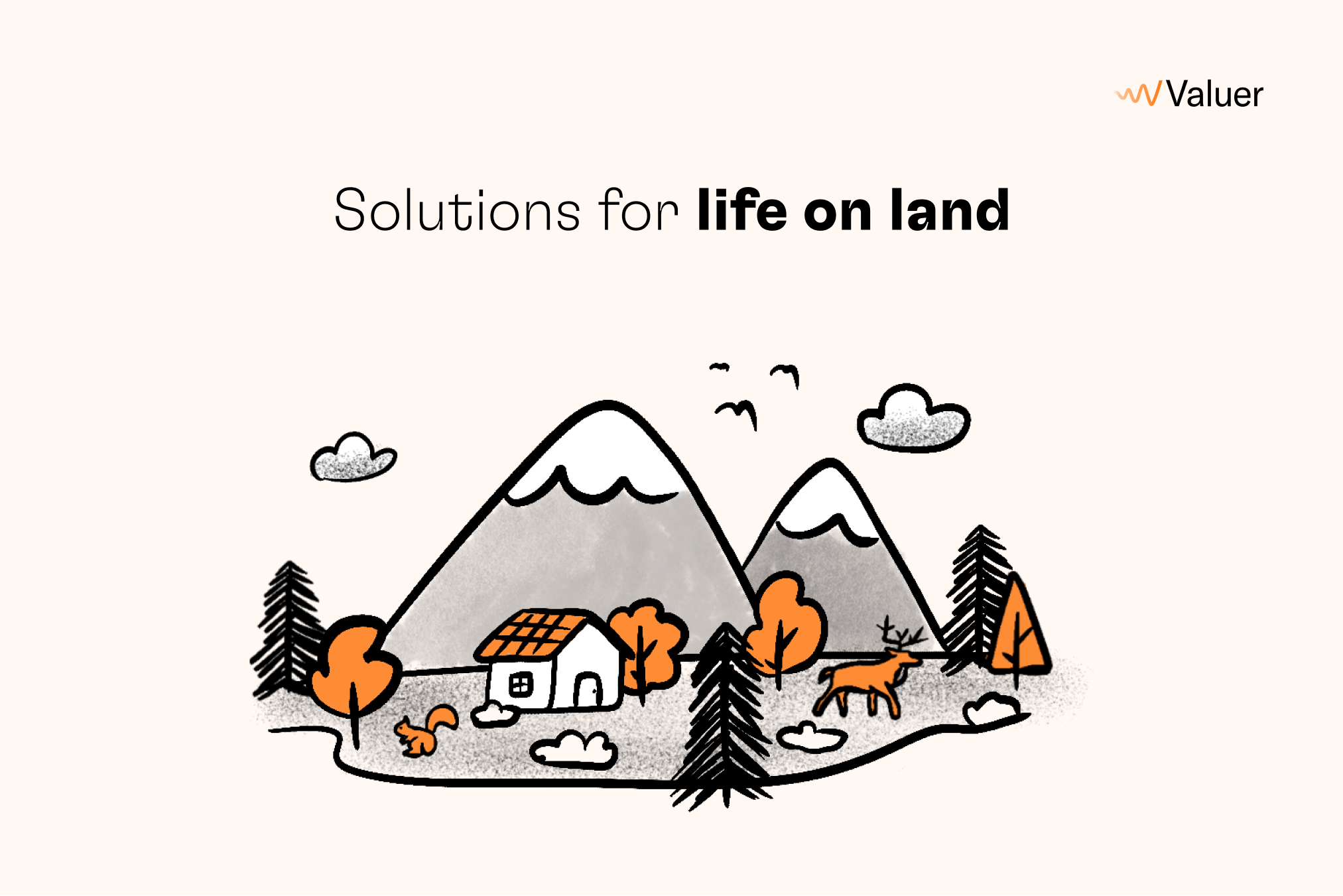
So, let’s give you an example of a detailed search along the lines of SDG 15’s life on land goal.
Your search could be something along the lines of "companies and startups within forest management solutions specializing in site-specific forest management".
Then, pick from the list of industries and sub-industries, which for the sake of this example be "sustainability and agriculture & farming" and the sub-industries "agtech and forestry".
Now you have successfully generated a list of results looking into sustainability along the lines of life on land SDG goal. Now the hard part, how to understand your results.
The next step - understanding the results
Now that you got your search done and your list generated, what’s next? Well, let’s start by looking at the first couple of company profiles generated.
Starting at the top, to the right of the company name on each profile, you will see one of two things. One of which is the percent match or what we refer to as “match score”, the second thing you will see is the “Valuer score''. Let’s break each down so you can better understand what both of these scores entail.
Match score
Let’s start with the match score. You can probably guess what this entails; it’s a percentage calculated by our platform that lets you know how well of a fit a company’s profile is in regards to your search inquiry. The aim of it is to give you a quick idea if a company is worth investigating further.
However, just because the match fit score is lower than you expected, we encourage you to still take a look at the company. Why? This is because the percentage is dynamic and based on your search parameters and inquiry. In other words, if you used different wording or a more precise inquiry that match percentage could potentially be much higher.
This feature can be incredibly useful for companies in the search for a business partnership or a collaborative endeavour. It will assist you in weeding out some of the companies you may have thought would be a good fit with others you haven’t heard of, but are a perfect match.
This is especially true if you take into consideration that on average it takes 9.4 months to solidify a partnership between startups and corporations. That’s quite a long time and a gap that we think our platform can help sure up by making the collaborative process quicker and more reliable. Because wasting all that time on a business collaboration is something no one can afford.
Valuer score
Now secondly, we have the Valuer score. This is a metric that allows you to quickly get a macro glimpse at how a company is doing. It is a ranking system that is from 1 to 100 and is based in comparison to other companies within the database. Five criteria are used to make up the Valuer score and they are:
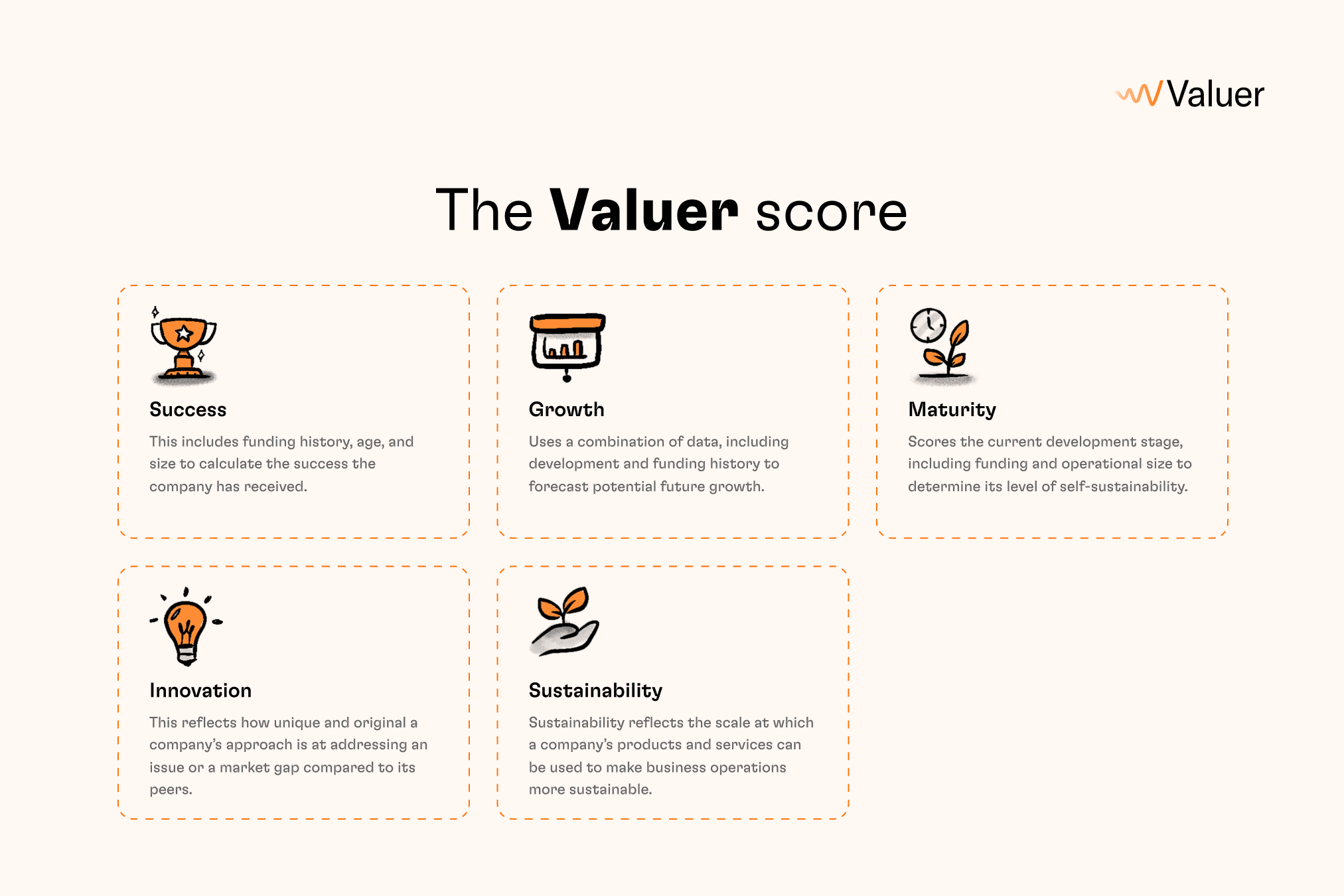
The applicability of the Valuer score is pretty wide, but one example could be for VCs and investment. For instance, if you’re a VC looking for the next big investment opportunity, the Valuer score can get you a good understanding of what a company is doing and where it’s headed.
Let us take SDG 15 goals into consideration, you can quickly look at the sustainability aspect of the score to see how sustainable a startup or company is right off the bat. This can help save precious time when it comes to researching companies by quickly cutting the ones that are not the right fit. Now, when you do find a company that meets your criteria the next step is then to open the company profile, get the company’s overview, and decide whether or not you want to enrich that company's profile.
The low-down on enriching company profiles
Now, when it comes to the meat and potatoes of the company profile, you can do a couple of things. The first thing is to click on a company profile. That will provide you with the background information on the company at hand. This includes a bio, founding year, company stage, funding round, etc.
Another thing you can do is to “enrich a profile”. This is available for users who have a subscription. This feature lets you to explore real in-depth data on a company. When enriching a profile you will get insights into six different areas of a company. These include:
Business Model - get data and detailed knowledge of the inner workings on a company and how they go about making a profit.
Value Proposition - discover what a company promises to deliver to its customers. Such as products, experience, communication, services, etc.
Product portfolio - see what a company is developing and the products that they are offering customers and the success of these products.
Technology overview - here you can get in-depth knowledge on what technologies a company is applying and/or developing. See how they apply technologies in order to deliver their products and services.
Market Opportunities - Find data on where a company is situated in the market, its growth potential, and projected market potential.
Achievements & Future Plans - here you can find achievements a company has had, such as partnerships, awards, investments, etc. Also, see where the company is setting its sights on for the future.
The startup case studies we examined in the SDG 15 life on land report were compiled by using the company profile that is available through the search feature and the enriched data. If you’re curious to see these features in action, download the SDG 15 report for free. If you have already read the report, then you know exactly what you’re getting with this feature.
Industry clusters
Clearly, staying on top of market changes and trends is a lucrative incentive, and an integral one for longevity. An Accenture survey of over 8,000 companies found that the top 10% of companies implementing innovative change were generating revenues twice that of the bottom 25% of company respondents.
What’s more interesting is that the bottom 25% are projected to have a 46% loss in revenue by 2023 if they do not innovate and adapt to market changes. Moreover, sustainable solutions implemented in a business are beneficial to the bottom line. Not only does sustainability help increase efficiency, but products and companies that have sustainability tied to their name grew 5.6 times faster.
But staying ahead of the curve is easier said than done and above all takes time. To address this issue we created an industry cluster map feature that paints a visual overview through information extrapolated from our database.
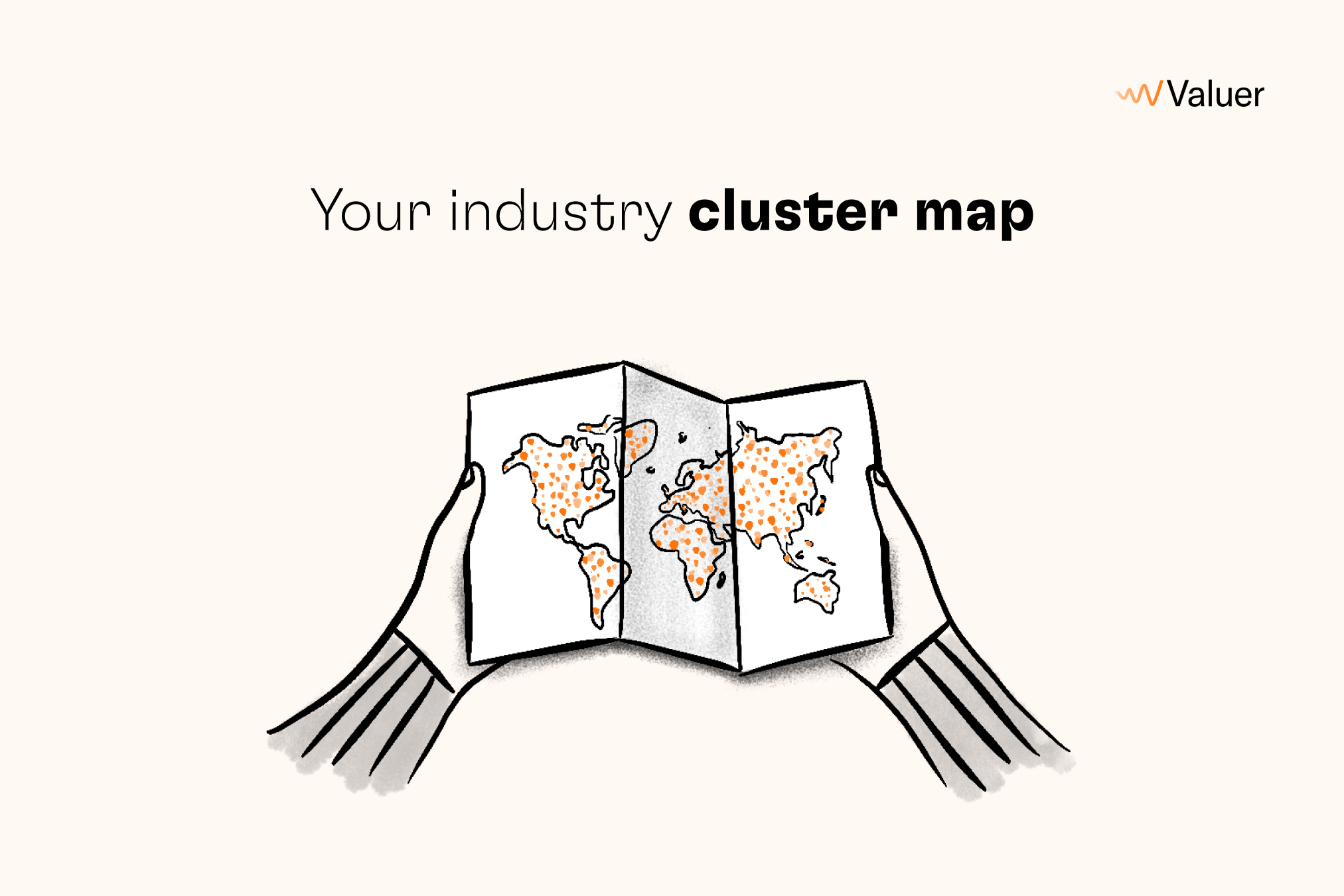
Now let’s translate this into the life on land report and how we used the industry clusters. Industry clusters are a feature on our platform that maps out a particular industry by creating a cluster map of the sub-industries and startups that make it up.
Each dot in the industry cluster represents a startup, and each color represents a sub-industry. If different sub-industries overlap, this means that they are using similar technologies and/or share similar business models. From here, you can easily identify industry trends through an area's intensity, much like a heat map in sports if you’re into that sort of thing.
Looking at the industry cluster map in the SDG 15 life on land report, what it showed were particular trends (intensity and population of startups) in sustainable agriculture, sustainable forest management, and sustainable water management. From there we were able to take a look at the startups in each focus area (sub-industry) to see what are the prevalent technologies or “tech trends” being applied the most in that respective sub-industry.
[Related article - Innovating Sustainability: The Future of Wastewater Management (Free Report)]
You can replicate these results using the platform in a couple different ways. For one, to get the industry cluster map, you can use our explore industries feature. Here you just select from a list of industries, click, and the industry cluster map will be generated. You can also use the explore technologies feature to find out where a specific technology is being used and which companies are using it.
But it could be that you can’t find what you're looking for on our platform, or maybe you need insights on a niche subject, like bridging business solutions with SDG goals. In that case, you can contact our team, request a report, and we will generate a custom report for your organization that’s along your areas of interest.
Looking back on SDG 15 life on land and forward to sustainable solutions
We aren’t reinventing the wheel when we say that it is important for companies to stay ahead of market trends and focus on innovation. And as you have probably already noticed, sustainability has become a part of the zeitgeist, which is logical considering the increased focus on climate change, decaying oceans, deforestation, etc.
However, our aim is not to tell you what you already know but rather to give you a tool that can help you spot what you don’t. And when it comes to innovation, one massive opportunity is within sustainability.
For instance, in Q1 of 2021, European sustainable fund inflows totaled €120 billion, which is 18% more than the Q1 of 2020. Clearly, sustainability has become more than just a political talking point, but rather a profitable business opportunity. Just take a look at the growing use of ESG reporting in investment.
With the growing opportunities and massive innovation coming out of the umbrella of sustainability, we were inspired to do our SDG 15 life on land report as well as our Innovating Sustainability reports. We set out to showcase what our platform can do; innovation in action. But we also want to show you ways to utilize the platform and hopefully inspire you to find your next business solution, your next investment, or your next collaborative endeavor.

